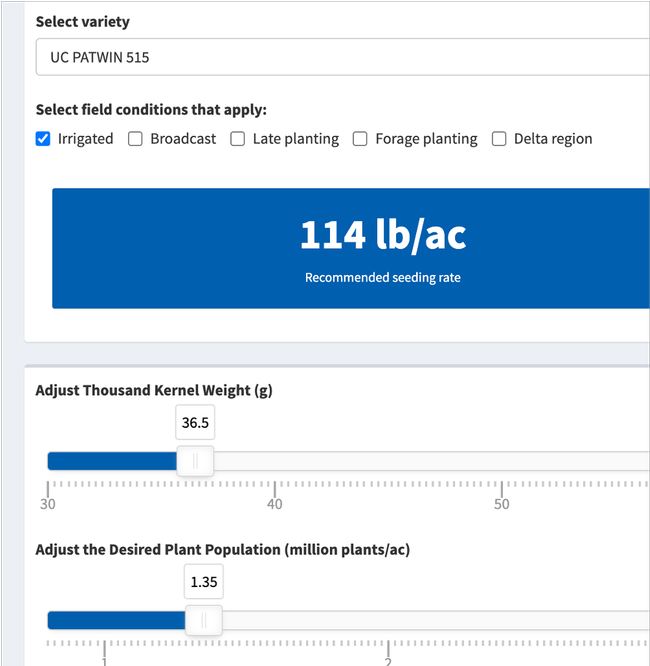Seeding rate is an important consideration for small grain growers at planting. There are a number of agronomic factors that help to determine the ideal seeding rate such as whether a field will be irrigated, the potential for weed pressure or lodging, the planting date, crop type, and seed germinability. In addition, there can be a large range of seed weights among different small grain varieties and from one seed lot to the next. To achieve full yield potential under irrigated conditions in California, 25 to 30 plants per square foot is a good target density for wheat. As a seeding rate this translates to approximately 1.2 million seeds per acre with a seed weight of 40 gram per thousand seeds. However, adjustments to the seeding rate are often needed based on the kernel weight and germination rate of the seed lot as well as other planting conditions.
In order to assist in the estimation of seeding rate for small grain growers, the University of California has developed a seeding rate calculator. The calculator allows growers to select their crop type, variety, and other agronomic conditions that might apply to their field. Based on these selections and the variety information measured in the UC small grain variety testing program, a seeding rate is estimated. The inputs can be easily adjusted using a series of checkboxes and sliders so that growers can easily understand how each variable influences the recommended seeding rate. The tool is available now on the UC Small Grains website:
http://smallgrains.ucanr.edu/General_Production/Seeding_Rate/
For more information about seeding rates and other factors related to planting small grains, please see the Seedbed Preparation, Sowing, and Residue Management chapter of the UC Small Grain Production Manual.
Attached Images:

